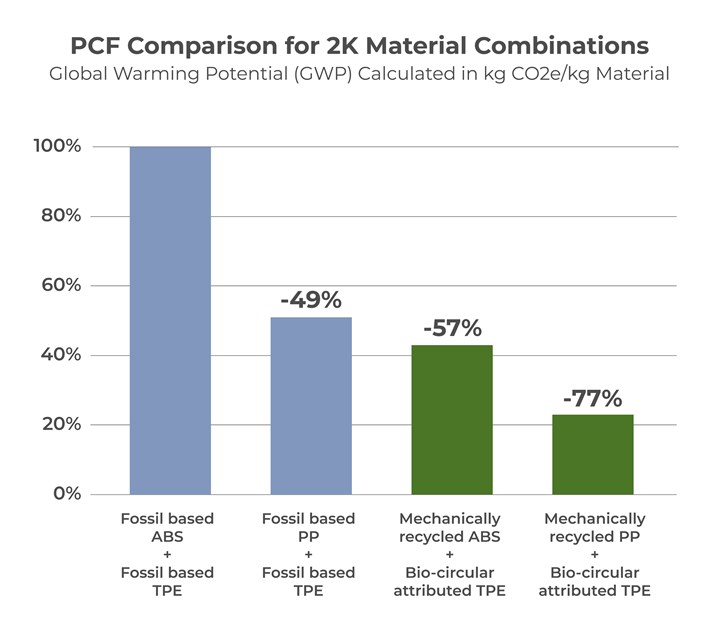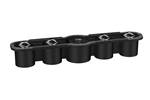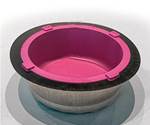More Sustainable Two-Component Overmolding
Swedish compounders HEXPOL TPE AB and Polykemi AB have collaborated on a 2K sustainable development project for consumer products.
HEXPOL TPE and Polykemi have collaborated on material combinations for multicomponent injection molding based on the resins’ properties and sustainability qualities. The companies’ goals included demonstrating the possibilities in reducing the product carbon footprint, while increasing recyclability and optimizing adhesion.
The compounders documented the cradle-to-gate Product Carbon Footprints (PCF) and Global Warming Potential (GWP) per kg of material. The PCF data shows that switching from a combination using fossil fuel based ABS from Polykemi, that is overmolded with a fossil fuel based TPE from HEXPOL TPE, to a recycled PP and TPE with bio-circular attributed content, can result in a 77% reduction in carbon dioxide emissions. The companies say this combination can also provide end-of-life and recycling compatibility advantages.
Combinations using mechanically recycled ABS with bio-circular attributed TPE were also tested, resulting in a 57% reduction in carbon dioxide emissions compared to the fully fossil-based equivalents. The TPE has bio-circular attributed content via the mass balance principle from 2nd generation feedstocks.

HEXPOL TPE and Polykemi have collaborated to determine maximum carbon reduction possibilities for overmolding PP with TPE.
Photo Credit: HEXPOL TPE and Polykemi
Related Content
-
Let's Take a Journey into the World of Molding Thermosets – Part 1
There are many fundamental differences between thermosets and thermoplastics, from the way raw materials are furnished to the molder and the process in which parts are molded.
-
Prices Up for All Volume Resins
First quarter was ending up with upward pricing, primarily due to higher feedstock costs and not supply/demand fundamentals.
-
Prices Up for PE, ABS, PC, Nylons 6 and 66; Down for PP, PET and Flat for PS and PVC
Second quarter started with price hikes in PE and the four volume engineering resins, but relatively stable pricing was largely expected by the quarter’s end.



